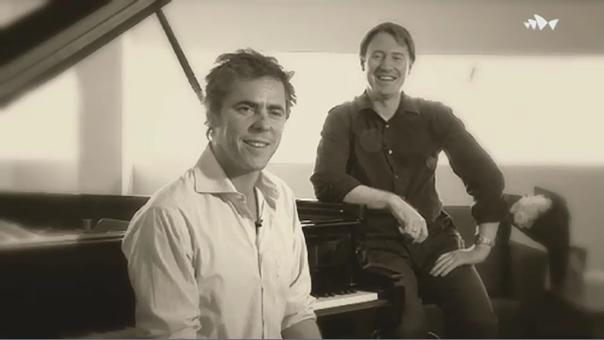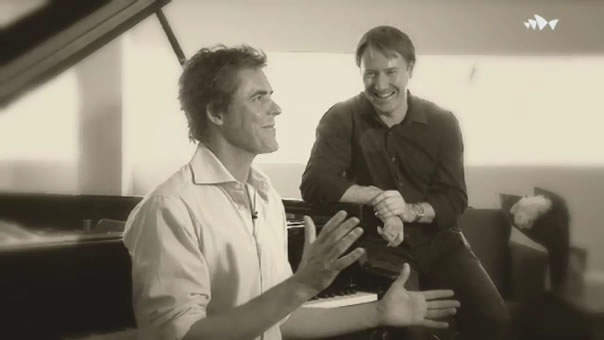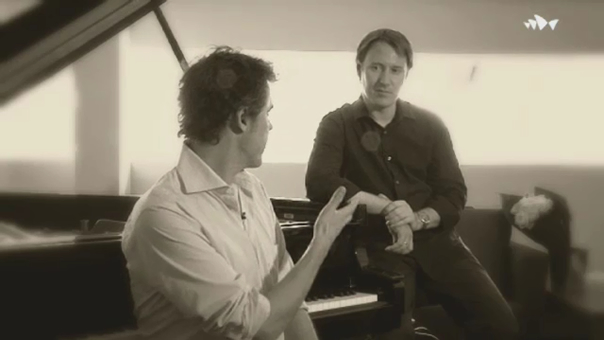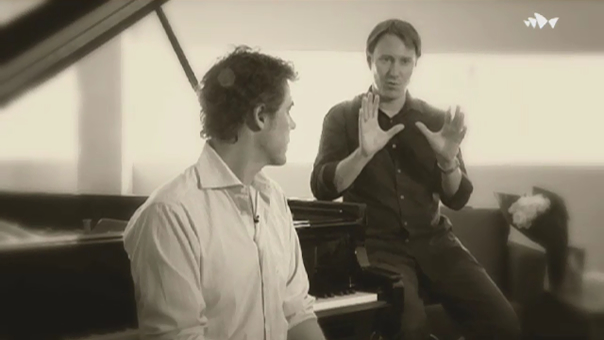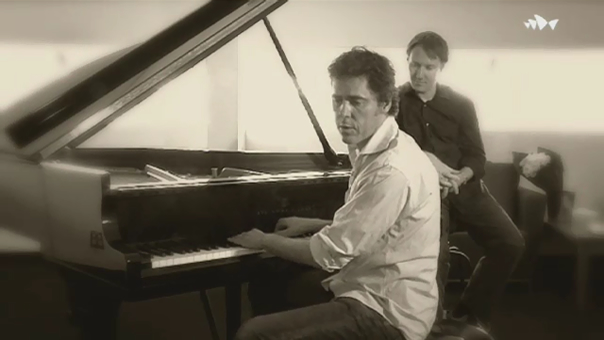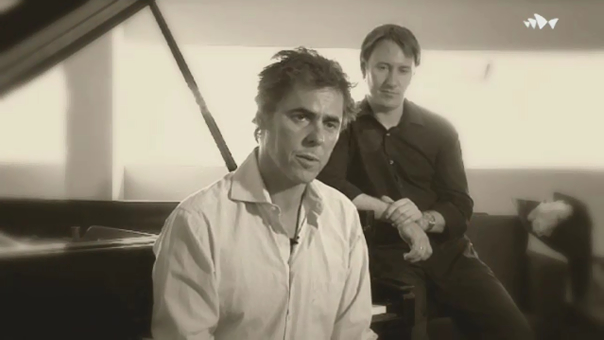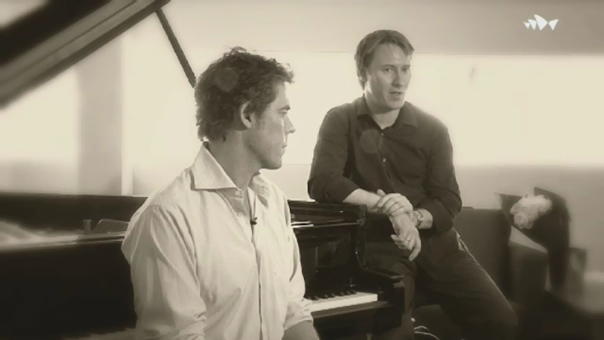Working together
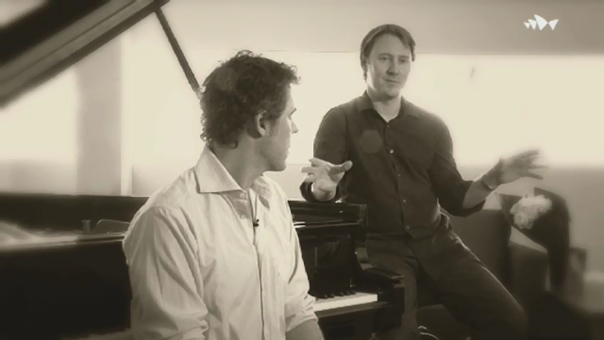
NSW DEC Copyright 2015
Viewing guide
In a small group, or as a class, share your experiences of collaborating with others on a composition or performance task. What were the challenges and how did you meet them? What were the benefits of the collaboration?
-
How does Ben describe his role in this collaboration?
-
How does Tim describe his role? What is he meaning when he says ‘write the songs and then basically let go’?
-
Listen for and take note of when:
-
Tim describes Ben as an interpreter, able to speak different musical languages, that of the orchestra and of the band.
-
Ben talking about ‘strong songs’.
-
-
Discuss Tim’s and Ben’s roles in the project.
-
Tim describes Ben as an interpreter, able to speak different musical languages, that of the orchestra and of the band. Outline the main difference that creates what Tim calls ‘both sides of the divide’. Suggest reasons why Ben is able to bridge this divide.
-
Tim compares Ben’s arrangement to music for film. Referring to Tim’s description, describe how a composer could create a ‘slow reveal’ rather than ‘bloated’ strings.
-
Name the concept of the music referred to and how it is manipulated. What changes?
-
Explain how texture could be used to provide an ‘epic, huge orchestral crescendo’.
[Music: No Aphrodisiac by The Whitlams performed with the Sydney Symphony Sinfonia]
Freya Lombardo (interviewer): Tim and Ben, would you like to outline your respective musical roles?
Ben Northey: I’m the conductor. Obviously, I suppose, the primary purpose of my job is to make it work and just bring these two seemingly disparate forces together and be a bit of a translator in terms of styles, and I’m sort of like a project manager making sure we get to the end.
Tim Freedman: My role starts off in a little room, me and a piano. I write the song really. After that I try and let go. I never know what the band’s going to do with my song. I never know what the style’s going to be, what beat Terepai going to give it, what style of guitar Jack’s going to play to it. My job is to just choose really good people I can trust and I don’t have to really direct things too much. It’s the same with the arrangers. Often I’ll have input into who does what arrangement but I will never tell them what I want because then I wouldn’t be giving them the room to put in their own ideas and their own style. I don’t want to ever limit their options at all, so I’ve got to let go. Write the songs and then basically let go and just enjoy everyone else’s input. We don’t speak the orchestra’s language. You know they’re tutti and all these Italian words and bar numbers but the songs are in our head. We don’t have them written down. So, if I say ‘Oh Ben, I think the woodwinds were a little funny there’, he’ll be able to explain that in technical language to the woodwind section and tell them what bar it is. I couldn’t really explain it to them in the same way ‘cause he knows their language and he knows our language ‘cause he used to play in… [to Ben] you played sax in soul bands didn’t you?
Ben: I’ve played in a few bands in my time.
Tim: So, Ben’s been on both sides of the divide.
Freya: Ben, how did you approach arranging the music for a concert like this?
Ben: We worked out which ones would be best suited to the style of arranging that I do and Tim’s got a really good instinct for that. He knows what the various arrangers can offer a piece of music. So that was the first thing to work out actually which tracks to do and I had a listen to a bunch of tracks and picked the ones that I thought that I could do well. And then I ended up importing the original song into my computer using a notation program and then overlaying orchestral textures over the original track and working out what I could add to the song and what the band could take away from what they had been doing. We worked out for a track off the Eternal Nightcap called Charlie No. 1, I did quite a sort of a self-contained orchestral arrangement. We worked out that was going to work best without the rhythm section of the band and just with piano and voice and it really features the orchestra more than some of the other charts that have been done. Then there were other arrangements. There’s one called Up Against the Wall which just took on a life of its own when I started doing the arrangement. All of a sudden it just grew and grew and grew and it became this kind of epic, huge orchestral crescendo.
Tim: It’s like an Alfred Hitchcock sort of theme soundtrack; like a Bernard Herrmann thing in places, mixed with Nelson Riddle. He’s thrown the kitchen sink at it basically.
Ben: Yeah, it was lots of fun. I really enjoyed that aspect of it and what Tim says about giving the arrangers the freedom to do it, I think that’s quite rare and it was much appreciated because it just meant that you could actually be as artistic and as creative as you wanted to be and he didn’t even want to hear it. It was like, ‘Oh, we’ll hear it on the day’ and you can see the look in his face. He enjoys that side of it, finding out and having this unveiling of his song. It’s good.
Tim: The most I ever do in terms of contributing to the arrangement is sometimes an arranger will write too much—that’s much better than writing too little—and so we’ll go ‘Ooh, it’s getting a little bit bloated there. We might just take those strings out of that first chorus and make it a slow reveal’.
Ben: Yeah, that’s right.
Tim: So, we just take a few little things out. But some people like Sculthorpe’s two arrangements, you don’t need to take anything out or add anything ‘cause he sort of gets it right, doesn’t he?
Ben: He does, yeah.
[Music and applause]
